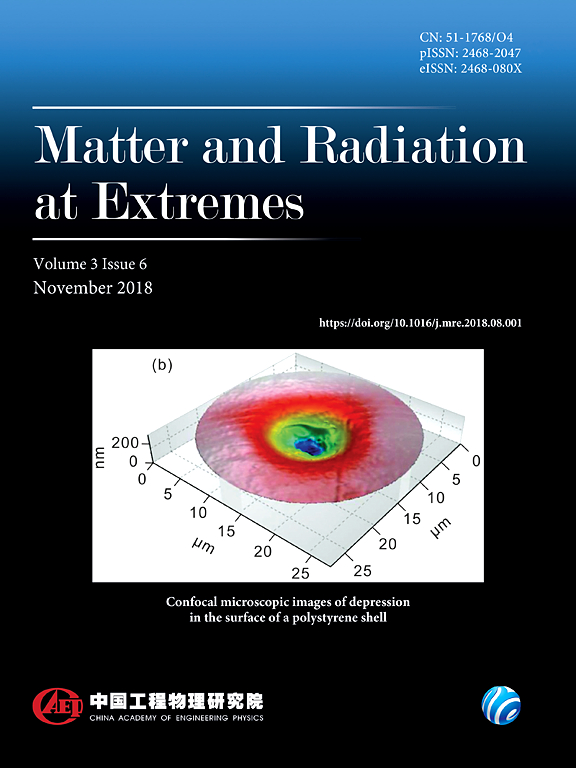Human radiological safety assessment for petawatt laser-driven ion acceleration experiments in CLAPA-T
IF 4.7
1区 物理与天体物理
Q1 PHYSICS, MULTIDISCIPLINARY
引用次数: 0
Abstract
The newly built Compact Laser Plasma Accelerator–Therapy facility at Peking University will deliver 60 J/1 Hz laser pulses with 30 fs duration. Driven by this petawatt laser facility, proton beams with energy up to 200 MeV are expected to be generated for tumor therapy. During high-repetition operation, both prompt radiation and residual radiation may cause safety problems. Therefore, human radiological safety assessment before commissioning is essential. In this paper, we simulate both prompt and residual radiation using the Geant4 and FLUKA Monte Carlo codes with reasonable proton and as-produced electron beam parameters. We find that the prompt radiation can be shielded well by the concrete wall of the experimental hall, but the risk from residual radiation is nonnegligible and necessitates adequate radiation cooling. On the basis of the simulation results, we discuss the constraints imposed by radiation safety considerations on the annual working time, and we propose radiation cooling strategies for different shooting modes.CLAPA-T中小功率激光驱动离子加速实验的人体辐射安全评估
北京大学新建的紧凑型激光等离子体加速器-治疗设备将提供 60 J/1 Hz、持续时间为 30 fs 的激光脉冲。在该设备的驱动下,预计将产生能量高达 200 MeV 的质子束用于肿瘤治疗。在高重复运行期间,即时辐射和残余辐射都可能造成安全问题。因此,调试前的人体辐射安全评估至关重要。在本文中,我们使用 Geant4 和 FLUKA Monte Carlo 代码,以合理的质子和产生的电子束参数模拟了瞬间辐射和残余辐射。我们发现,实验大厅的混凝土墙可以很好地屏蔽即时辐射,但残余辐射的风险不可忽视,必须进行充分的辐射冷却。在模拟结果的基础上,我们讨论了辐射安全因素对年工作时间的限制,并针对不同的发射模式提出了辐射冷却策略。
本文章由计算机程序翻译,如有差异,请以英文原文为准。
求助全文
约1分钟内获得全文
求助全文
来源期刊

Matter and Radiation at Extremes
Physics and Astronomy-Atomic and Molecular Physics, and Optics
CiteScore
8.60
自引率
9.80%
发文量
160
审稿时长
15 weeks
期刊介绍:
Matter and Radiation at Extremes (MRE), is committed to the publication of original and impactful research and review papers that address extreme states of matter and radiation, and the associated science and technology that are employed to produce and diagnose these conditions in the laboratory. Drivers, targets and diagnostics are included along with related numerical simulation and computational methods. It aims to provide a peer-reviewed platform for the international physics community and promote worldwide dissemination of the latest and impactful research in related fields.
 求助内容:
求助内容: 应助结果提醒方式:
应助结果提醒方式:


